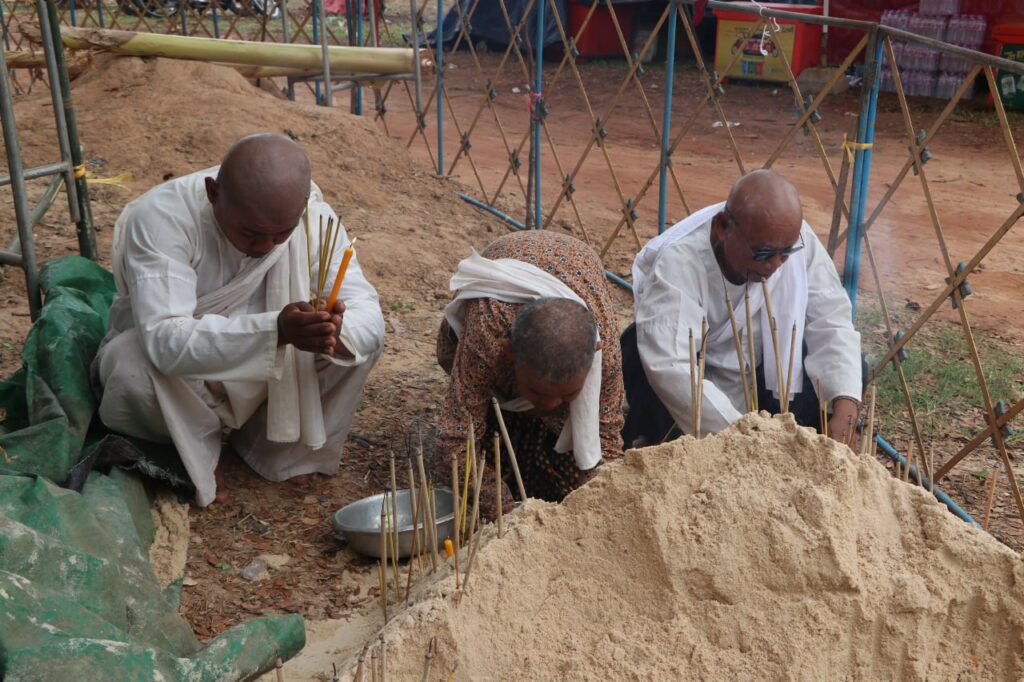បច្ចុប្បន្ននេះ ធូបខ្មែរនៅមានការនិយមប្រើប្រាស់តាមវត្តអារាម និងក្នុងកិច្ចពិធីនានានៅក្នុងជីវិតប្រចាំថ្ងៃរបស់ប្រជាជនខ្មែរ។ ពិសេសអ្នកស្រុកអង្គរ ដែលធូបទាំងនេះ ត្រូវបានផលិតដោយអ្នកស្រុកអង្គរផ្ទាល់ ហើយយកវត្ថុធាតុដើមក្នុងតំបន់មកផលិត និងមានគុណភាពល្អ ហើយភាគច្រើនធ្វើឡើងដោយមនុស្សមានវ័យចំណាស់ប៉ុណ្ណោះ។
ការគាំទ្រដោយប្រើប្រាស់ធូបខ្មែរ គឺប្រៀបបានជាការថែរក្សាចំណេះដឹង និងជំនាញបន្តដល់កូនចៅជំនាន់ក្រោយដែលមនុស្សនៅក្នុងតំបន់អង្គរ តែងតែចែករំលែកពីមួយជំនាន់ទៅមួយជំនាន់មិនឱ្យបាត់បង់ ទើបនៅតំបន់អង្គរមានវប្បធម៌សម្បូរបែបនៅរស់ក្នុងជីវភាពប្រចាំថ្ងៃរបស់ប្រជាជនក្នុងភូមិស្រុក។
ក្រុមការងារស្រាវជ្រាវនៃអាជ្ញាធរជាតិអប្សរា តែងតែខិតខំចងក្រងប្រមូលនូវទំនៀមទម្លាប់ប្រពៃណីក្នុងតំបន់អង្គរ មកផ្សព្វផ្សាយ និងសូមគាំទ្រចំពោះការថែរក្សាមរតកវប្បធម៌ទាំងនេះឱ្យមានភាពរស់រវើក ថែមទាំងលើកទឹកចិត្តឱ្យប្រជាជនខ្មែរ ងាកមកគាំទ្រផលិតផលខ្មែរ ដើម្បីលើកស្ទួយជីវភាពប្រជាជនផង និងការអភិរក្សផង៕
អត្ថបទ និងរូបភាព: លោក យី សុថា
The production and use of Khmer incense in various ceremonies of Angkor residents have deep cultural significance and are an integral part of Cambodian daily life. The practice of making and using Khmer incense has been passed down through generations in Angkor, showcasing the rich cultural heritage of the region.
By supporting the use of Khmer incense, individuals are not only preserving traditional knowledge and skills but also contributing to the livelihoods of the local community. The efforts of organizations like the APSARA National Authority to document and promote these traditions are crucial in ensuring the preservation of Cambodian cultural heritage.
It is important for Cambodians to continue supporting Cambodian products like Khmer incense, as it not only sustains local traditions but also helps in the conservation of cultural practices for future generations. The use of Khmer incense in ceremonies adds a sense of spirituality and tradition to daily life in Angkor, making it an essential part of Cambodian culture.
Article and Photos: Yi Sotha
Share:
Our Latest News

ទស្សនីយភាពស្រស់ត្រកាលនៃប្រាសាទខ្មែរ នារដូវវស្សាមានភាពទាក់ទាញយ៉ាងខ្លាំង -The Fresh Scenery of Khmer Temples During the Rainy Season is Truly Captivating- 06 October 2025
នារសៀលថ្ងៃទី០៣ ខែតុលា ឆ្នាំ២០២៥នេះ ឯកឧត្តម ឡុង កុសល អគ្គនាយករង តំណាងដ៏ខ្ពស់ខ្ពស់ ឯកឧត្តមបណ្ឌិត ហង់ ពៅ អគ្គនាយអាជ្ញាធរជាតិអប្សរា ព្រមទាំងសហការី បានទទួលជួបពិភាក្សាការងារជាមួយគណៈប្រតិភូមកពីទីភ្នាក់ងារសហប្រតិបត្តិការ និងសម្របសម្រួលទួរគី (TİKA)




